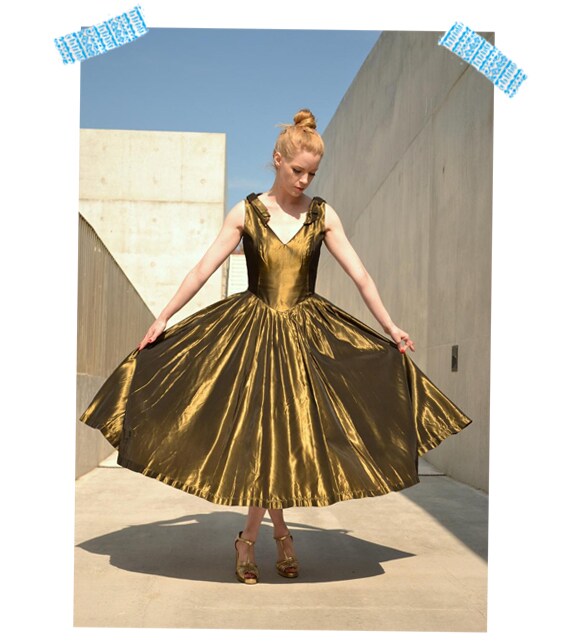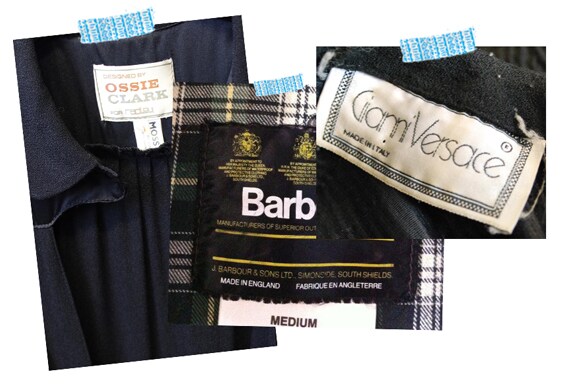Seller Blog
Advice, help and support for ASOS Marketplace sellers.
What Is & Isn't Vintage?
“Thanks!
It’s vintage!”
Words we
all like to ping back at someone complimenting a piece you are
wearing. Trouble is, as the Vintage market grows & grows, we’re seeing a
lot of ‘Vintage’ pieces that are not ‘Vintage’ – they are simply not old enough
to classify as Vintage, or they are listed as Vintage but are just ‘Vintage
style’ – i.e. A new dress that simply has a fifties shape.
This post
is going to run down what counts as Vintage, what doesn't, and roughly how to
go about pricing and describing your pieces.
So, what
IS Vintage?
- Any piece
that is over 20 years old is now classified as ‘Vintage’.
This
means that, yes, the early ‘90s are now Vintage. A slightly depressing thought,
but a valid one. So, original Hacienda rave T-Shirt from 1991? That’s Vintage
folks. Late ‘90s C&A ski leggings? No deal.
Vintage
now encapsulates so many eras and styles it’s not enough to simply list is as
Vintage and hope someone finds it, it’s the quality of product, labelled correctly
and priced fairly that will lead to sustained Vintage sales.
Old
doesn’t always mean gold.
With Vintage spanning
so many eras, quality of product has never been so important. So, yes, technically a
pair of M&S leggings from 1988 count as Vintage, but should you sell them?
No.
From what
we’ve seen so far on Marketplace, the Vintage that will always sell well can be
broken down into a few different categories:
- Vintage versions of everyday classics:
Seventies denim, Eighties striped T-Shirts, Sixties shift & day dresses,
utility Camo jackets – you get the drill. Anything that fits into a modern
wardrobe but happens to be a vintage stunner.
- Party Pieces: Special
occasion Fifties dresses, flapper shifts, 20’s tails. Show stoppers that people
buy for special occasions.
- Key pieces: Traditional sundresses
from the Thirties right through to the Seventies. Varsity Jackets, French
workmen jackets, Vintage sports & band tees. Anything that screams vintage,
but is still an everyday piece.
As
Vintage seller, you’ll be able to sort your Golden Oldies from your just plain
old, and if you find yourself struggling, then perhaps its time to do a little
more research into your pieces. If you’re labelling up a dress as being from
the Fifties, it’s really best to make sure it is. There are plenty of online
resources to help you tell, and a quick Google will likely provide you with the
answers and plenty of help and support – like here
and here.
In the
case of the Fifties dress – does it have a label? Google it! Does it have a
zip? Is the zip metal? Plastic zips weren’t used as frequently in the Fifties,
so that might well be a tell tale sign.
Trust
Issues
The
vintage community is massive, but it’s one built on trust. You’re not going to
get far by taking a stab in the dark at your piece’s origins, or downright lying about your products to potential
customers. The joy in Vintage is that the piece has a history, and that’s what
will bring loyal customers back again and again. It’s totally cheeseball, but
building a vintage selling reputation is built on
respect – for the clothes and your customers.
So...
what’s it worth?
The big Q
right? Ultimately – it’s down to you. The only thing we can do is stress that
you need to do your homework. If you are used to selling show stopping Fifties
dresses in rather swish parts of town, you might be surprised to see lower
prices for similar items on Marketplace – and that’s the internet for you. It’s
turned every listing into an option for one store’s front
window – all jostling for space up front. It’s competitive, but it’s also got
way more eyes on it, so its chances of selling are much higher too. Have a look
around, try a few different price points out – see what works for you.
The real
key with pricing is to specifically label your piece as best you can. The more
homework you can do on a piece, the more detailed you can make your
description. The more detailed your description, the more likely it is to be
found in the Google search of someone who wants exactly the piece you are
selling and is ready to pay up for it.
Are you a
Vintage seller? How do you determine the era of your items? Got any issues with pricing? Join the debate on our Google+ page.


